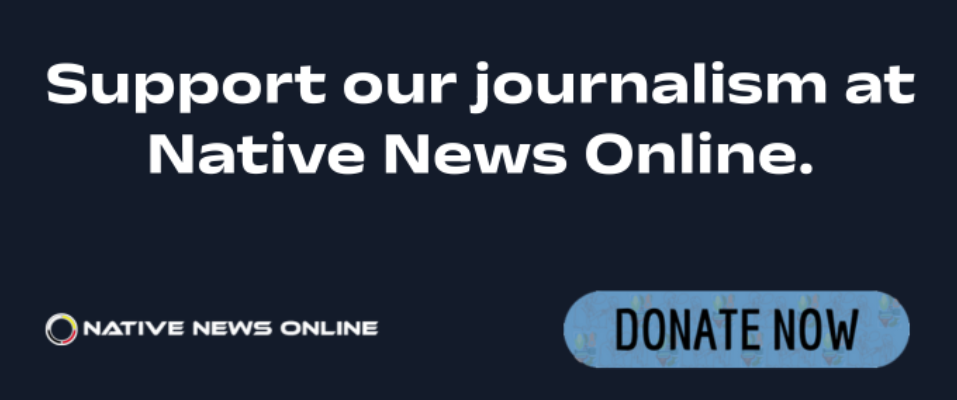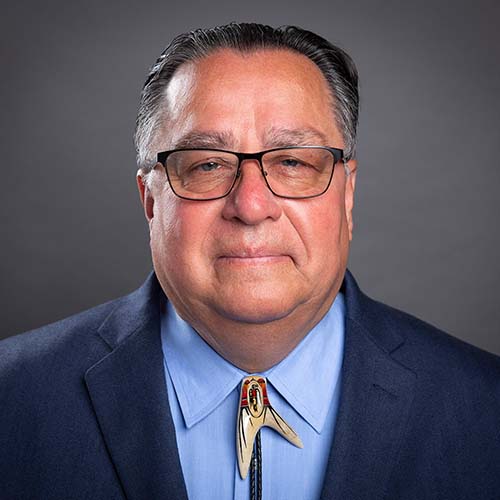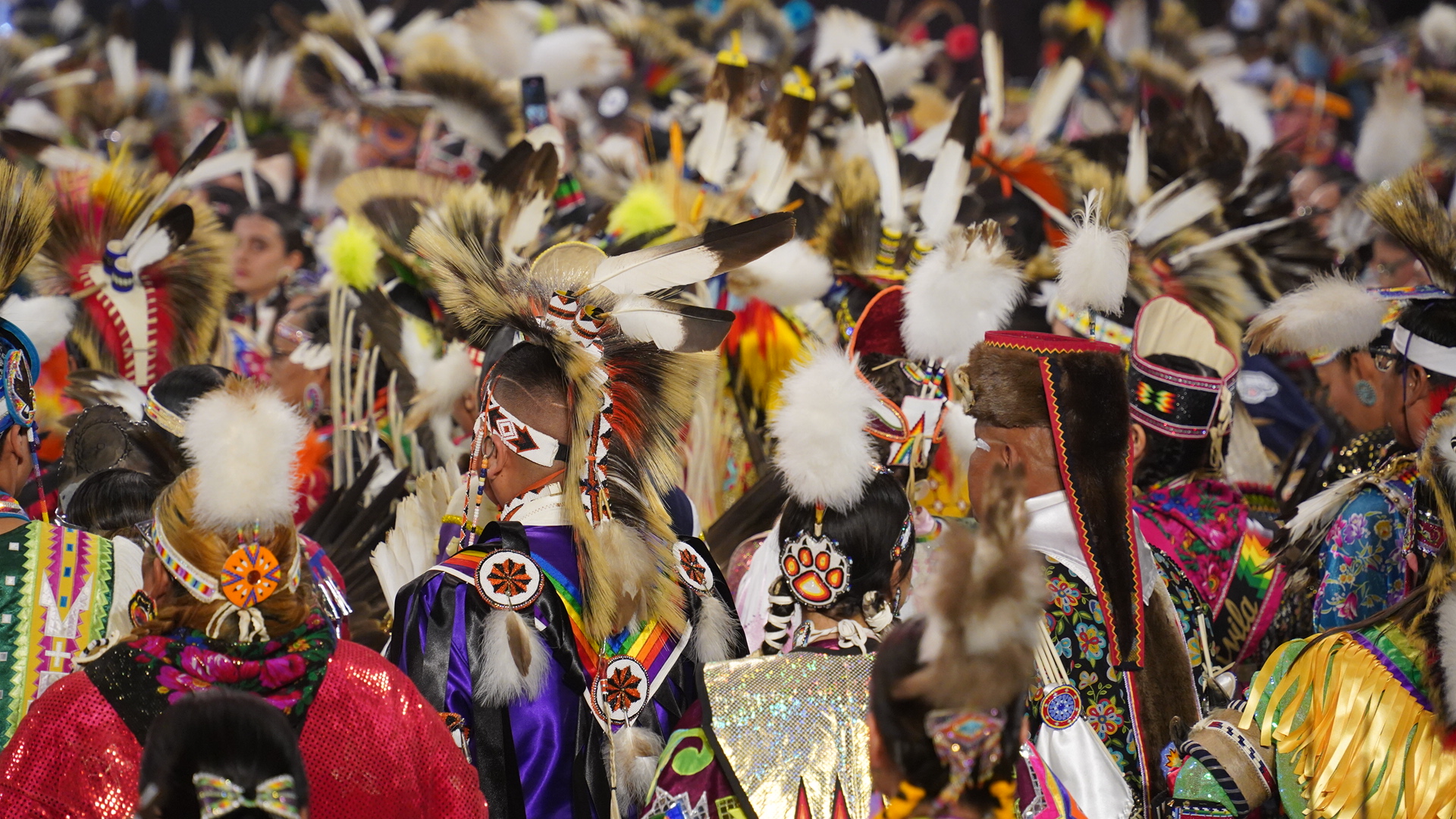
- Details
- By Levi Rickert
After 43 years, the Gathering of Nations Powwow, billed as the largest powwow in North America, will come to an end on April 24–25, 2026. The announcement was made in a press release on Saturday, as organizers revealed the official dates and event poster for the final powwow.
The poster prominently features the words: “THE LAST DANCE.”
“There comes a time,” is the only official statement released by Gathering of Nations Limited, the organization that founded the powwow more than four decades ago.
The 43rd and final Gathering of Nations Powwow will take place at Expo New Mexico/Tingley Coliseum in Albuquerque, New Mexico.
The Expo NM grounds offer a vibrant and welcoming setting, featuring popular attractions such as the enchanting and reverent Teepee Village, the Native American Horse/Regalia and Rider Parade on Main Street, the indoor Indian Trader’s Market, a Native food court, car show, and some of the best competitive and social dancing in North America. Native dancers and singers from across the United States and Canada are expected to participate.
In 2026, the powwow will also join in the Route 66 centennial celebrations, hosting various activities on the grounds as part of the historic tribute.
The Gathering of Nations annually attracts over 3,000 performers and more than 100,000 visitors. An additional 4.2 million people engage with the event through its live webcast, according to the Gathering of Nations website.
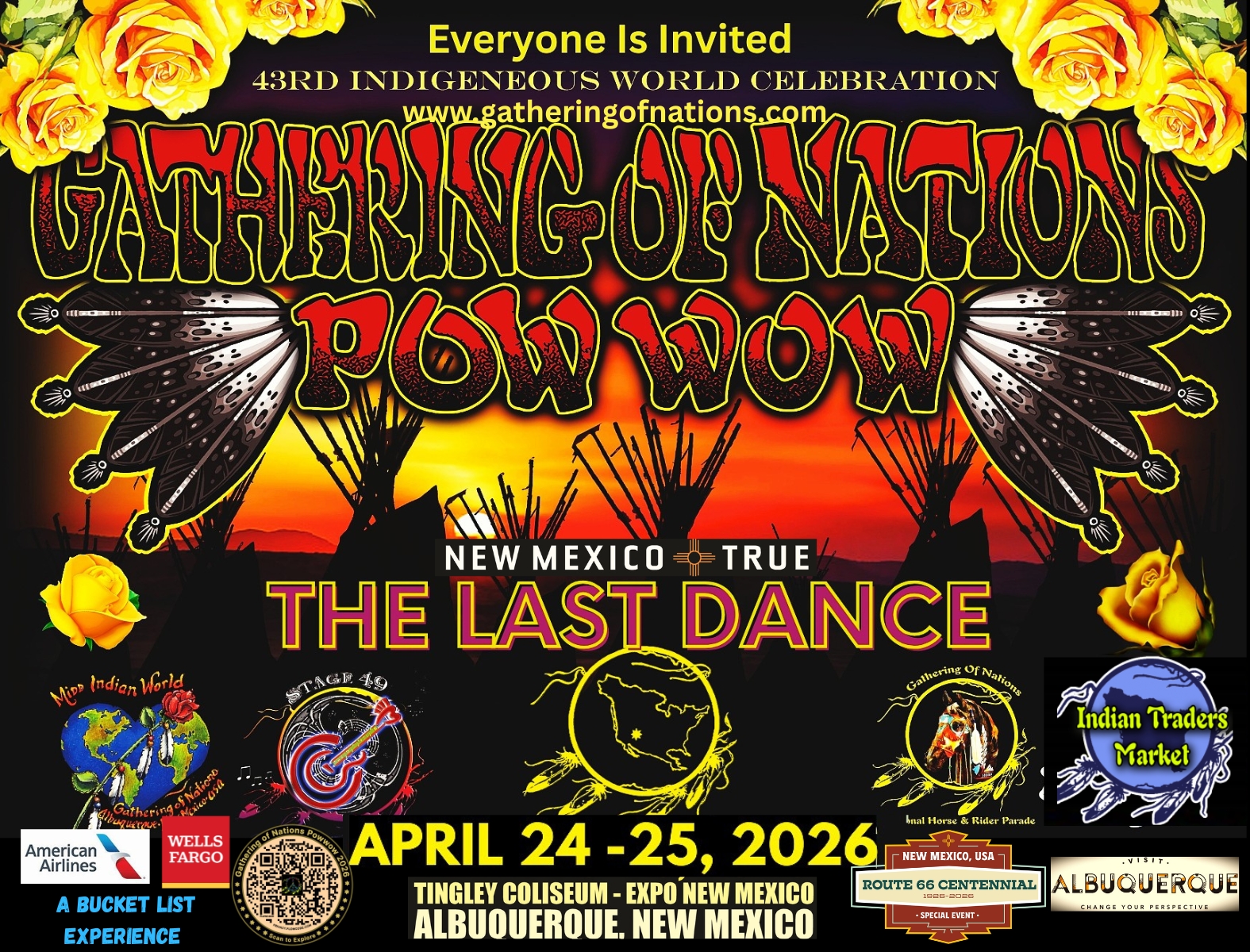
In April 2023, the event set an attendance record with over 105,000 attendees. Dancers and singers representing more than 500 tribes from across the U.S. and Canada regularly take part.
The Gathering of Nations also hosts the annual Miss Indian World competition, one of the most prestigious cultural pageants in Native America.
The conclusion of the Gathering of Nations Powwow will be a significant loss for Albuquerque. The city typically sees hotel rooms fully booked during powwow weekend.
According to Reilly White, a finance professor at the University of New Mexico, the event generates approximately $30 million in economic impact for the city each year.
More Stories Like This
Native News Weekly (August 25, 2024): D.C. BriefsUS Presidents in Their Own Words Concerning American Indians
Navajo Man Faces Vehicular Homicide Charge After Child Killed at Navajo Nation Christmas Parade
Next on Native Bidaské: Lumbee Tribal Chairman John Lowery
Suspected Drunk Driver Crashes into Parade in Kayenta on Navajo Nation, Killing 1 & Injuring 3 Others
Help us defend tribal sovereignty.
At Native News Online, our mission is rooted in telling the stories that strengthen sovereignty and uplift Indigenous voices — not just at year’s end, but every single day.
Because of your generosity last year, we were able to keep our reporters on the ground in tribal communities, at national gatherings and in the halls of Congress — covering the issues that matter most to Indian Country: sovereignty, culture, education, health and economic opportunity.
That support sustained us through a tough year in 2025. Now, as we look to the year ahead, we need your help right now to ensure warrior journalism remains strong — reporting that defends tribal sovereignty, amplifies Native truth, and holds power accountable.
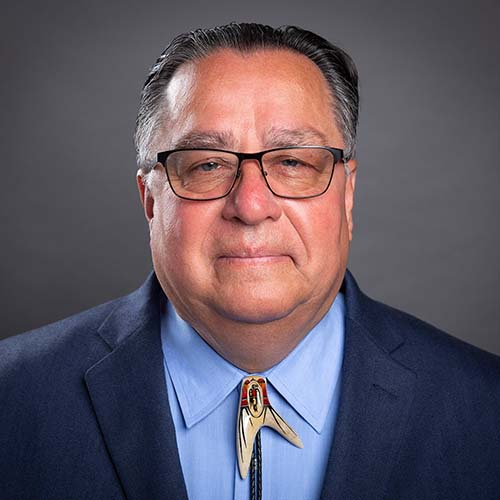 The stakes couldn't be higher. Your support keeps Native voices heard, Native stories told and Native sovereignty defended.
The stakes couldn't be higher. Your support keeps Native voices heard, Native stories told and Native sovereignty defended.
Stand with Warrior Journalism today.
Levi Rickert (Potawatomi), Editor & Publisher

